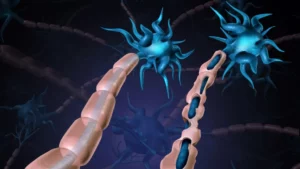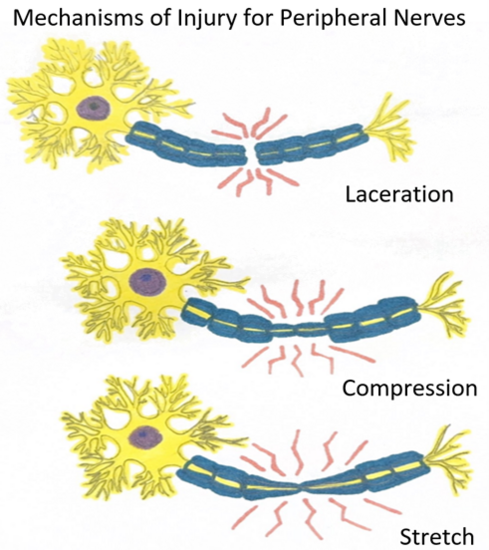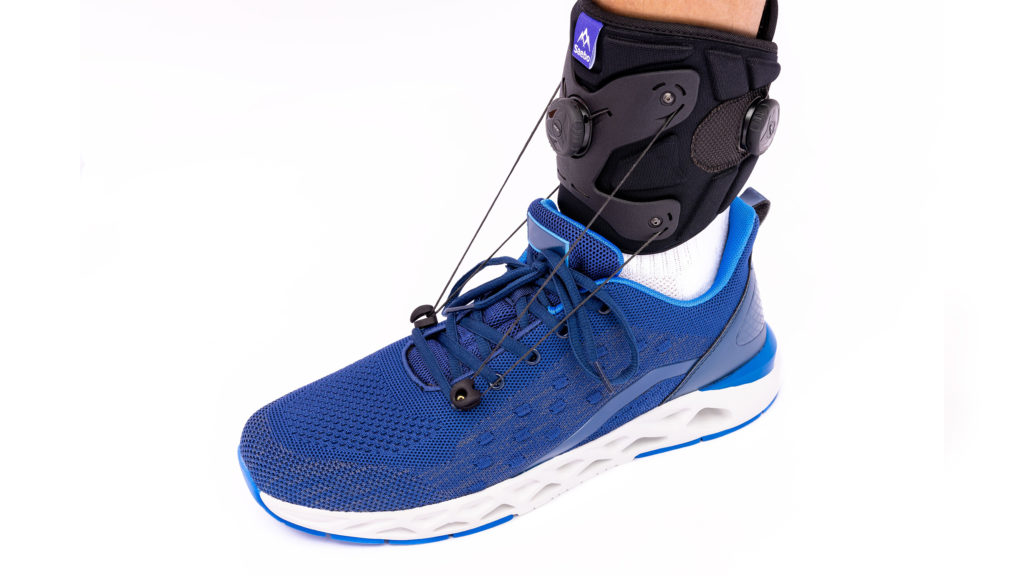Peripheral Nerve Injury
Amy Bean
Tuesday, August 13th, 2024
#dropfoot#electricalstimulation#footdrop#pain#painrelief#peripheralnerveinjury#TENS

Our peripheral nervous system is a network of nerves that deliver motor, sensory and autonomic information (regulates body functions such as heart rate and digestion) from our brain and spinal cord to the rest of our body. Think of it like our telephone system sending messages and calls along telegraph lines to the end receiver and back again.
If any of the nerves are injured e.g. trauma, compression from bulging spinal disc, broken bones pushing on them etc., this disrupts the signals being sent. This can lead to weakness or absence of movement depending on the severity of the nerve damage, loss or altered sensation and for some people pain.
The injury can be partial meaning there is still some connection to send the electrical signals but movement is weaker, there is reduced sensation or altered pain; or it can be a complete severance of the nerve fibre resulting in no movement and sensation.
Treatment and management will be dependent on the extent of the nerve damage.
Categories of Injury:
First degree. Mild and temporary damage when the nerve is compressed (e.g. bulging disc) or if the nerve is stretched. If the compression is released or the stretch on the nerve is taken off before longer lasting damage is done then full recovery will occur and no intervention needed.
Second degree. If the duration of the compression is lengthy or there is a very prolonged stretch on the nerve, the nerve remains in tact but the protective insulation around it is damaged. This may be the result of a bone break, or brachial plexus injury for example. Natural repair can happen, but may be slow and intervention may be required in the intervening period of time.
Third degree. Total severance or disruption to the nerve fibre. In some cases, enough of an insulation “tunnel” remains for the nerve to slowly regrow down, but unfortunately for some the damage is too severe for any recovery or regrowth.

Image courtesy of Katherine Baca, SPT of Arkansas Colleges of Health Education
Considerations for management and rehabilitation with Saebo:
Resulting peripheral nerve injury problems
- Muscle weakness, (“foot drop” when the lower limb is affected).
- Loss of range of movement
- Reduced sensation
- Pain
- Reduced function
Muscle weakness or absence of movement at the foot and ankle from nerve injury can result in foot drop. Our SaeboStep is designed to hold the foot up when walking. This makes walking safer, more efficient and less effortful. It could be used as a temporary measure when a 2nd degree injury occurs and natural repair is happening or as a longer term option if the damage is permanent.
The SaeboStep can accommodate heavy foot drop when no foot or ankle movement is present, and for active users it can be worn during sport, hiking, jogging etc. Read Charlotte’s Journey to learn about her lived experience with foot drop from peripheral nerve injury and the SaeboStep.
We often get asked if electrical stimulation (NMES) can be used with a peripheral nerve injury. The answer to this depends on the extent of the damage. With a 1st degree, it wouldn’t be required as full recovery naturally occurs quickly. If it is a 2nd degree injury that still has some pathway in tact for the signal to travel on then it can be considered. It’s purpose can be to help maintain muscle bulk whilst repair happens, maintain range of a joint if there is limited movement that would result in muscle shortening, and there is some research that it may help with nerve regrowth but there are mixed findings with this – we recommend seeking specialist advice for this.
As a very general guide, if flickers of movement are visible (even if very weak), then electrical stimulation is worth considering. The flickers of movement show that there is enough of a nerve pathway for the electrical stimulation to produce a muscle contraction and be used to reduce muscle atrophy, maintain joint range and help work on strength.
If there are no visible flickers of movement it is likely that the electrical stimulation won’t produce a muscle contraction as there is not enough of a nerve pathway present for it to travel on.
When considering either the SaeboStim One or SaeboStim Pro, both can be used for a muscle contraction with a peripheral nerve injury. The SaeboStim Pro allows for greater variation with electrode placement which can be key if the muscle has already reduced in size due to atrophy (muscle wastage) and there is more flexibility with settings. The SaeboStim Pro also has a sensory stimulation programme with our accessory mesh garments that may be beneficial for those suffering with altered sensation and pain. The SaeboStim One is quick and simple to apply for muscle weakness and improving range at a joint.
NICE guidelines published in 2022 recommend for early rehabilitation following nerve injury the following:
- Splinting
- Exercise (passive and active)
- Pain management
- Sensory work (mirror therapy, electrical stimulation)
- Vocational /functional therapy i.e. working on every day tasks
From our Saebo product range our SaeboGlove (active exercise), SaeboStim Pro with TENS for pain management and sensory stimulation programme for sensory work and SaeboMirror Box can all be used to meet these recommendations.
All content provided on this blog is for informational purposes only and is not intended to be a substitute for professional medical advice, diagnosis, or treatment. We do have our Clinical Support Team for questions about our products, but always seek the advice of medical health professionals with any questions you may have regarding your own medical condition.
